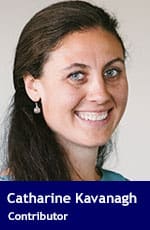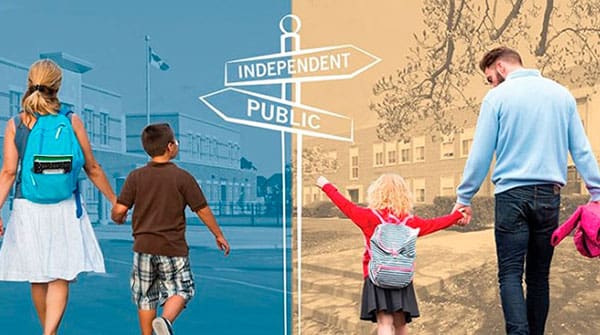But independent schools face barriers because of over-regulation

Schools reclaiming space from libraries and music rooms for classrooms. Planned expansions to buildings. Bringing in portables. Waitlists in every grade.
Sounds like a familiar story in Alberta’s education system, right?
Plot twist: This is what’s happening in Alberta’s independent schools. Parents are moving hell and high water and making significant sacrifices to get their children into them.
Alberta’s 180 independent schools – which serve nearly 41,000 students and make up a considerable ecosystem of educational pluralism in this province – are in the middle of an incredible period of growth. Independent school enrollment has risen 28.5 per cent in the last five years to 40,676 this school year. Comparatively, public school enrollment has risen just 4.2 per cent in the same period.
 |
| Related Stories |
| How the Alberta election will impact children’s education
|
| Public schools failing to produce enough STEM graduates
|
| Alberta’s business leaders need to take education failures seriously
|
We at Cardus received first-hand accounts from 11 urban independent schools in Alberta recently. All of them said they’re either at capacity, growing rapidly, or have a waitlist. Parents are driving this demand, seeking schools that fit their children’s needs. This desire isn’t new, but the increasing commitment to enrolling children in these options is.
Families have diverse education needs – and if the public school board doesn’t meet them, families aggressively seek alternatives. Their motivations are as diverse as the children in independent schools. Some need better supports for children with disabilities or learning challenges. Some pursue stronger academics. Others were pleasantly surprised during lockdowns to discover their children thrive in distance or self-paced learning. Some are concerned about ideology – on both sides of the proverbial fence. Others have found a renewed desire for culturally- or faith-enriched education and seek a closer-knit school community. The list goes on.
Few appreciate just how diverse Alberta’s independent schools are. Headway School provides Punjabi instruction. Edmonton Islamic Academy has classes in both Arabic and Islamic Studies. Lycée Calgary not only teaches full French immersion, but students learn the French Ministry of Education requirements alongside their Alberta high school diploma.
The demand is real. Two-thirds of the schools Cardus has heard from have introduced at least one new program or grade offering within the last two years. Several others have similar plans for the near future. Nearly three-quarters stated “space” or “facilities” as one of the biggest barriers to further growth in their school community. In other words, with access to more space, they could easily accommodate the Albertan families on their waitlists.
So, the demand is there, but what about supply? Why is there a mismatch between the desire for independent schooling and the ability of the sector to satisfy Albertans’ preferences?
One problem is over-regulation. The bureaucracy involved in launching and operating a new school makes it frustrating and overly burdensome. While independent schools do receive partial operating funding from taxpayers, at 70 per cent of the public per-student grant, they don’t receive that money in their first year of operation when they need it most. And independent schools are responsible for 100 per cent of their capital costs.
Interestingly, Rachel Notley recently suggested that an NDP government would develop language-based versions of the Alberta curriculum, including in Somali, Tagalog, and Yoruba. She might be missing a more obvious way to support ethnic diversity in education. Independent schools have already proven more than adept in placing diverse cultural lenses on the Alberta curriculum – complete with language classes, cultural celebrations, and (where parents have chosen) faith-based instruction.
Rather than a central planner picking one culture over another, removing the start-up barriers preventing Somali, Tagalog, and Yoruba education entrepreneurs from launching their own schools would be better. Then, not only would such an opportunity exist for many more ethnic groups, but parents seeking other types of learning (like Montessori, STEM, or forest schools) would have the same chance to do so.
Taxpayers fund education to give every child a fair shot at life. As Alberta continues to grow and become more diverse, this means removing needless red tape so that the supply of culturally-oriented independent schools catches up with what Albertan parents want.
Catharine Kavanagh is the Alberta liaison officer at non-partisan think tank Cardus.
For interview requests, click here.
The opinions expressed by our columnists and contributors are theirs alone and do not inherently or expressly reflect the views of our publication.
© Troy Media
Troy Media is an editorial content provider to media outlets and its own hosted community news outlets across Canada.